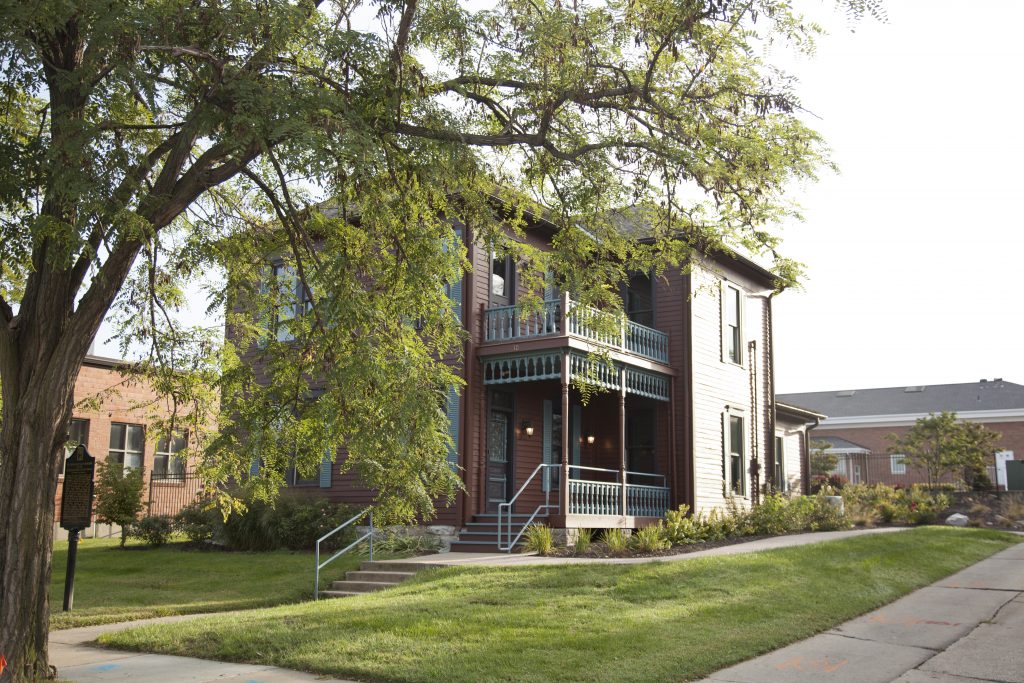Supporters
Many sponsors helped make the renovation of the home a reality, and we are always open to exploring the opportunity to collaborate with new sponsors.
If you are interested, please call (573) 449-0039 or email us at bbhf@blindboonehome.com.
Corporate Sponsors
Commerce Bank
Providence Bank
Central Bank of Boone County
Landmark Bank
Downtown Community Improvement District
Cosmopolitan Lunch Club
Carpet One
Century Link

Individual Sponsors
James and Marsha Miller
Clyde and Sheila Ruffin
Matt and Rhonda Moore
Brent and Kelley Gardner
Brenda and Charlotte Hammond
William and Zella Spicer
Berkley Hudson and Milbre Burch
Preservation
In the fall of 1996, former Mayor Darwin Hindman asked Debbie Sheals, a local architectural historian, to investigate the feasibility of preserving the Boone house. In early March of 1997, Sheals, Greg Olson, Wynna Faye Elbert and others formed a group of interested preservationists that became known as the “Blind Boone House Project.” This group prepared and compiled their findings in a report entitled, “J.W.”Blind” Boone House: Restoration and Adaptive Reuse Options.” The purpose of the report was to assist the project group in their efforts to find a new, appropriate use for the building.
The following month, the project group distributed survey forms throughout the community, which were designed to solicit the thoughts of respondents regarding:
– Future use of the property
– Future ownership of the property
– Preferred funding sources for the preservation of the property
The results of the survey indicated a strong preference for public use of the property, not-for-profit ownership, with a degree of government support and rehabilitation costs deriving from a cooperative combination of public and private funds.
When those surveyed were asked to state, in their own words, a suggestion for the use of the property, the public indicated the desire for a museum center dedicated to African-American heritage. Other frequent responses suggested a community meeting center and a center for music and performance. The overwhelming majority of suggestions included a need for educational opportunities and special services for children and youth.
Encouraged by survey responses and public support, the ‘Blind” Boone House Project resolved to form a not-for-profit organization, and thus, the John William Boone Heritage Foundation was established to acquire, govern, restore, develop and operate the historic John W. Boone house.
In 1997, Harold and Helen Warren revealed their plan to sell the house and build a new funeral home in another location. The foundation submitted a formal proposal to the Community Development Commission requesting $169,000 for the purchase of the house to transform it into a cultural heritage center. It was a complicated and lengthy process, but eventually the funds were allocated and the city purchased the house in 2000.
When foundation board members entered the house, to their dismay, it was immediately apparent that significant termite damage had compromised the integrity of the studs and seal plates inside the exterior walls. Moreover, a long-neglected roof had led to water damage of wall and roof structural elements. Soon after, the Boone Foundation was successful in securing funding from Missouri’s Historic Preservation Office for an architectural reuse plan. With the collaboration of the City of Columbia, funds were secured to stabilize the house. In 2002, a group of community volunteers demolished the garage and the slow journey toward complete restoration began.
In 2006, the foundation submitted a grant application for $225,000 to Save America’s Treasures, a federal program that funds the restoration of historic public buildings. Although the application was not approved, the foundation continued to develop its capital campaign while preparing to reapply with a more competitive application to the federal program. Unfortunately, the economic crisis of 2008 resulted in the closing down of this program. Without funding for the restoration, the house once again began to deteriorate even as volunteers continued to work periodically on the interior demolition.
In 2013, the City of Columbia experienced a $1.4 million surplus. This proved to be the opportune moment for Mayor McDavid to endorse a recommendation for $500,000 to complete the restoration of the Boone home. Concerns about this amount resulted in a series of meetings to lower the budget so approval could be ensured. On June 3, 2013, the city council approved spending $326,855 to complete the restoration of the Blind Boone home. The foundation also transferred $16,500 to the city to supplement the budget for the landscaping.
After demolition, the house was nothing more than a shell. Once the wood lathe was removed, the entire structure became unstable, so the entire house had to be reframed by attaching new 2×4s to the original ones. The curving staircase was systematically removed, as were all of the wood trim, doors and fireplace and each piece labeled. Plumbing, electrical, heating and air conditioning, security, and wiring for new technology were installed, followed by insulation and dry wall. The original floors on the first level were salvaged and restored.
The restoration of Boone’s home is a tribute to the residents of Columbia, music lovers everywhere and the African-American community. The heritage of this inspirational and talented man – who lived and created many of his compositions in his 4th Street home – is a vital and important element in the history of our community. Revitalization of the home and gardens brings a resurgence of community pride in the heritage of yesterday and excitement about the future of Columbia.